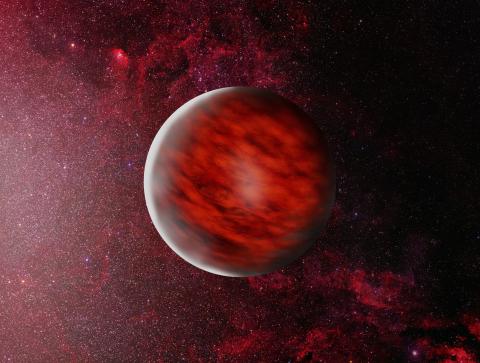NASA citizen scientists discover extremely red free-floating brown dwarf

Backyard Worlds: Planet 9, a NASA-funded citizen science project that uses data from NASA's Wide-field Infrared Survey Explorer (WISE) space telescope to search for new objects at the edges of our solar system, recently discovered an extremely red Jupiter-like object.
Nicknamed CWISE 0506, the object is the reddest-ever free-floating brown dwarf - failed stars that are about the size of Jupiter but not massive enough to be a star. Brown dwarfs are composed mainly of hydrogen gas.
"The science team interpreted its red color to mean that this brown dwarf is very young and very cloudy, which would mean it has a mass only a few times that of Jupiter. This discovery should help us understand how free-floating planetary-mass objects form and evolve, and will provide a unique laboratory for studying objects with unusual cloud properties," NASA said in a statement.
The Backyard Worlds: Planet 9 project just discovered a brown dwarf – a ball of gas not massive enough to be a star – with the reddest "colors” we've ever seen. Learn more about this cool discovery and how you too can help explore our galactic backyard: https://t.co/HXrYtmEnUu pic.twitter.com/rtoU5NsWk7
— NASA Citizen Science (@DoNASAScience) February 15, 2023
Scientists believe that there is a hidden population of brown dwarfs floating by our solar system and beyond. Amongst them are the coldest known brown dwarfs, known as "Y dwarfs," which are very similar to planets that just don't orbit other stars. The Backyard Worlds: Planet 9 project aims to find these rogue worlds to better understand how both stars and planets form.
Unlike ordinary stars and the familiar eight planets in our solar system that shine brightly at visible wavelengths, brown dwarfs glow mainly in the infrared. To find these dim objects, one must comb through the images by eye to distinguish moving celestial bodies from ghosts and other artifacts. More details about the project can be found here.










